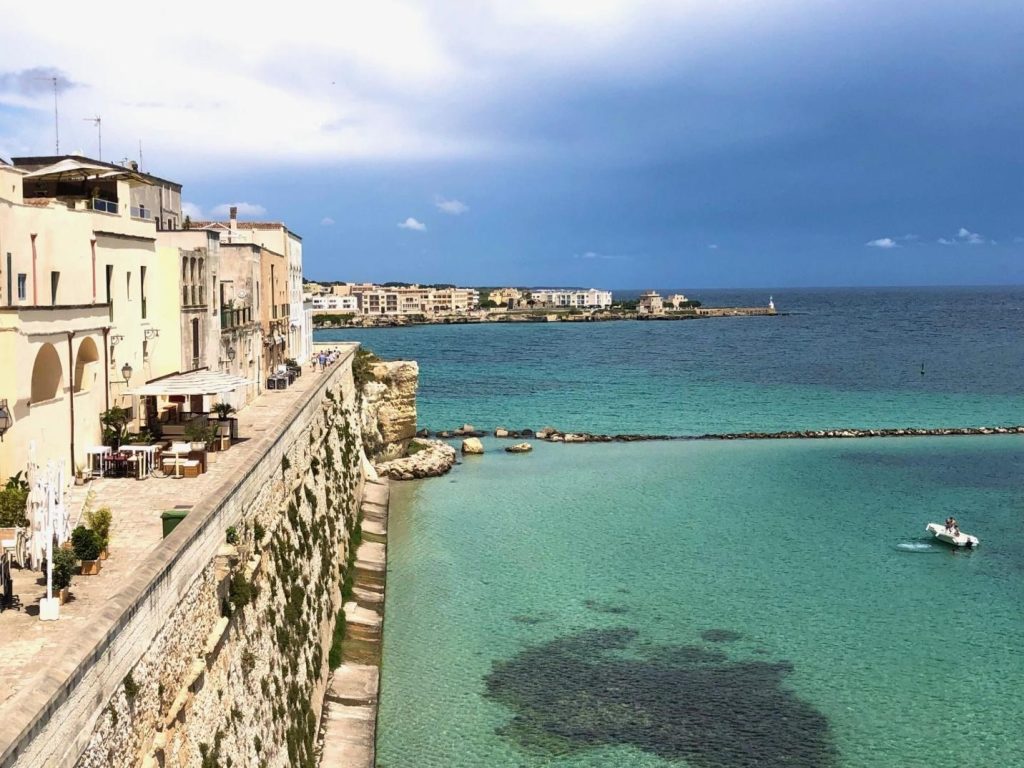Puglia is becoming an increasingly popular destination while still maintaining local traditions. The magnificent architecture of Lecce and Bari, the coastal charm of Polignano al Mare & Monopoli, the ‘hobbit’-like conical trulli in Alberobello, and local cuisine and wine offer a delightfully different experience of Italy. It is this melding of cultures that makes Puglia – the ‘heel’ of Italy’s boot – delightfully different.

The Flavors of Puglia
The Pugliese have found a natural way to savor life by eating locally grown foods washed down with wines descended from ancient vines. A trip to the region sounds like the perfect recipe for your next trip.
Puglia’s cuisine is often referred to as cucina povera, the cooking of the poor. Rather than being defined by the influence of trained chefs, the cuisine stems from the traditions found in homes, usually of nonna. And, nonna has plenty to choose from. Puglia’s penetrating summer sun ripens the region’s olives, fennel, chicory, fava beans, and artichokes to perfection. The warm climate and fertile soil make it easy to grow almost anything. The region is also a leading producer of wheat and offers more than 600 pasta shapes. If you are strolling in Bari Vecchia in the morning, you will see the ladies sitting outside and shaping orecchiette – pasta shaped like little ears – effortlessly.

Puglia’s strategic positioning – at the heel of Italy’s boot where the Ionian and Aegean seas meet – made it a prime target for invasions. The region exchanged hands numerous times since its founding in 2000 B.C. when the Mesopotamians settled in. The Greeks, Saracens, Normans, Turks, and Romans also conquered it, leaving the imprint of their cultures on the region’s food. The Swabians brought radishes; Arabs brought citrus fruits and almonds; Spaniards brought potatoes and tomatoes. The blend of influences results in a gastronomic kaleidoscope of colors and flavors in every dish.

Keep Pouring
Local winemaking dates back to the Phoenicians. The Greeks called the land “enoteca.” Puglia is now the sixth-largest winemaking region in the world and is famed for cultivating Primitivo – a clone of the Zinfandel grape – and Negroamaro. Most wines are red, full-bodied, and offer good values compared to their neighbors in the north. You can sip wines in Lecce, where you can be elbow to elbow with other locals who frequent the numerous wine bars on Via Umberto I.

Must Visit Towns
Puglia is 250 miles long from north to south, providing lots of options for adventurous road trips. Some of our must-visit towns include Lecce, also known as the “Florence of the south,” the white hilltop city of Ostuni that is called la città bianca; the coastal town of Polignano a Mare, and the fairytale town, Alberobello, with its unique conical-shaped structures called trulli.

One of our most magical dining experiences was in Polignano a Mare at Grotta Palazzese. The venue is an Instagram favorite, but the restaurant is built into an impressive cliff and makes for a memorable experience. Set inside a natural cave, you can dine inside a grotto while enjoying gourmet dishes with the sounds of the sea.

Accommodations
Puglia is home to the masseria or fortified farms that were originally the residences of the landed gentry. With sprawling acres of olive trees and vineyards, they are a perfect stay.

If you prefer more of an urban feel, Lecce, Polignano a Mare, Monopoli, and Ostuni offer stunning architecture, seaside views, and Greek influences. During a recent visit, we were impressed by the new hotels in the cities that offer historic architecture in a chic, modern setting.

Puglia is still under the radar, so book your visit with us before it is fully discovered.




Leave a Reply